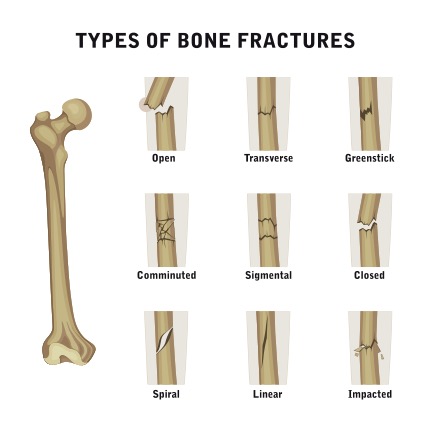Broken Foot / Foot Fracture
This article does not constitute as medical advice.
If you are experiencing symptoms of a fractured foot, contact your doctor or make an appointment.
This article does not constitute as medical advice.
If you are experiencing symptoms of a fractured foot, contact your doctor or make an appointment.
A break in a bone is a fracture. Simple fractures are single, clean breaks in a bone, while compound fractures are complicated breaks. Fractures caused by accident or injury are called traumatic fractures. Stress fractures are minute cracks in the bone caused by repeated mild trauma to the bone, e.g., repeated, intense action by a high jump athlete or a gymnast that repeatedly stresses the same places in the bones.
